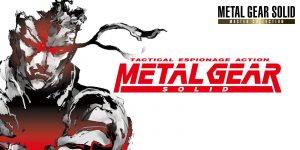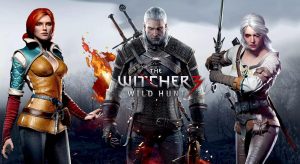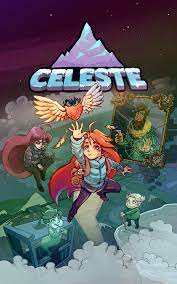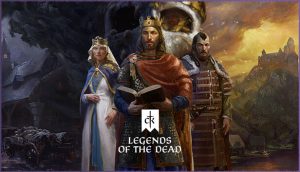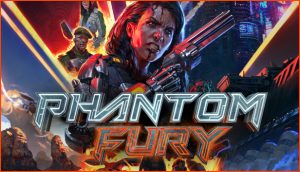
As soon as the third “The Witcher” reached the Nintendo Switch, the Polish RPG became the talk of the town again. And it’s understandable: it’s interesting to see how beautiful picture can be produced by a portable console. But if you think back to the day when you first got acquainted with Wild Hunt, what was the strongest impression? Surely from the story, which in some places surpasses even the original Andrzej Sapkowski’s (Andrzej Sapkowski) cycle. All thanks to the team of screenwriters, one of whom was Jakub Szamalek (Jakub Szamalek). The material dedicated to him and the work on the game was recently published on Eurogamer, and we present the article for our readers in the great and powerful language.
Remember the moment right after the tutorial episode in Caer Morhen Fortress? Heralt and Vesemir, the witches searching for Jennyfeather, are chatting casually on the road to Vyzima, reminiscing and seamlessly transitioning from one line to the next. The script seems so simple and flawless, as if the words formed themselves in the text. However, according to Jakub Šamalek, the first impression is deceptive.
“Actually, I checked how many times I had to edit the dialog in this scene,” he says during an interview at the Spanish science fiction festival Celsius232. – I think it was over 120 times. Sometimes it was minor changes like changing one sentence, but sometimes we had to rewrite the whole thing. We were doing a lot of things: composing, playing, adjusting something, eliminating unnecessary things, and then taking it back to the pencil. That’s the nature of development. When you make a video game with a lot of interconnected elements, it’s inevitable.
Chamalek joined the CD Projekt RED team in May 2012, a few months after work on The Witcher 3 began. By that time, screenwriters Sebastian Stepien, Marcin Blacha and Arkadiusz Borowik were already preparing the main document – a 60-page manual with a synopsis of the plot, description of parts of the world of “The Witcher”, information about key characters and concepts. It was necessary to turn a condensed synopsis into a full-fledged script. For this purpose, it was divided into parts, focusing on the three main nodes (in Novigrad, No Man’s Land and Skellig), and then fragmented the resulting fragments into separate quests and dialogues, ensuring the interconnection of missions and characters. “Reminds me of a matryoshka doll,” Shamalek jokes.
Although the team used Google Docs for the cutscenes and Excel spreadsheets for localization needs, most of the work was done in a proprietary editor created specifically for the game. “The good thing is that we were able to customize the tool for our purposes – at least at first, until the programmers were swamped with other tasks,” Shamalek recalls. – The downside of the editor was its instability: we had to put up with overly long load times and crashes, and we had to save work progress every five minutes just in case.
Another technical problem turned out to be the scale of “Wild Hunt”, unprecedented for CD Projekt RED. Many development tools were created in parallel with the development itself: “We were making the engine and the game at the same time, that is, new features were constantly appearing in our editor, which caused it to crash – this made the path to release very difficult.
Look at the classic moments: the folkloric horror in the Whispering Hill mission, the Blood Baron’s family tragedy, the reunion on the Isle of Mists – they’re all filled with subtle emotions, subtle gestures, and displays of humanity. But for most of the development period, the team didn’t have ready character models, visual environments, or voice recordings. And everything has to be combined with graphics, text, and direction. For example, Shamalek recalls working on the episode where Geralt and Jennyfair search for a werewolf on Skellig.
“It was an early iteration of the quest, so the assets were lacking. Skellige was a patch of land with grass textures, and instead of Geralt there was a model of “Skellige Fisherman 02″ – as in, instead of an enchantress. That is, both were replaced by a bald guy with no textures, voice or animation. Early testers had to read the text at the bottom of the screen to get the big picture, and the camera worked as if it was falling into the model or into the ground. So we have a scene with two lovers. They banter with each other, and there’s a warmth to it, with Geralt keeping his distance from Jennyfair, though there’s still a connection between them that creates emotional tension. But the staff sees two gray fishermen with Skellige. Without pitch control, it’s hard to gauge what’s funny and what’s not. It’s a hell of a challenge,” says the developer.
Geralt in the books is gruff and terse when his job requires it, especially when negotiating with customers or enemies, but he can be sarcastic when talking to friends. The writing team wanted to capture this lighter side of the character, but as Shamalek found out, “telling jokes in games is stressful, because you don’t know in advance if they’re going to work properly or not.”
Staging comic sketches in an interactive space is not the only challenge the scriptwriters faced. In movies and TV shows, we often see quiet scenes where characters are relaxed and interacting with each other – such moments are important for varying the pace, engaging the viewer and revealing characters. The Witcher 3 developers wanted to come up with similar situations, and Shamalek offered his colleagues an innovative approach to building camaraderie. “It’s about a quest where the witches meet in Caer Morhen,” the screenwriter elaborates. At this point, a huge chunk of the story comes to an end, and the player prepares for a decisive battle. Doesn’t he deserve a moment of fun and respite? A party with friends was the perfect realization of this idea.
“The problem is that dynamics are good for the game – fights, chases and the like. And intimate and quiet episodes aren’t always appropriate. We wanted the gamer to have a drink with Geralt’s old buddies, but where’s the gameplay here? How do you show that you’re actually participating in the feast and not just watching an interactive movie? In the end we came up with simple tasks based on already existing mechanics: you go through a drunken game (“I never…”), run for snacks in the kitchen, look for a hungover friend, for the sake of hooliganism dress up in the dresses of a sorceress. The audience loved the result, but realizing this scene took a lot of trial and error.”
As the production gained momentum, the question of artistic vision came to a head. Video game development studios are usually made up of separate teams – some are in charge of design, others are in charge of storytelling, those are programming, those are drawing artwork. And everyone has their own idea of how the game should ultimately look and work. These viewpoints don’t always complement each other in an interactive environment, and authors often have to revise their views. Brilliant finds in the story may not work if you make adjustments for audience preferences.
“When we first started making the third ‘Witcher,’ we had a war-ravaged Velen – a veritable hell on Earth,” Shamalek says, “with villagers on the verge of starvation. To somehow make ends meet, they revert to black magic, perform rituals designed to ensure their existence, and so on. We had a really clear idea of what it should look like. So we put together a document and sent it to the art team.
And later, when we were playing the game, we looked into the village and immediately saw an old woman plucking geese. She pulls out a clump of feathers, puts it aside and plucks some more. If you stand there long enough, you will see a pile of 20 geese forming. Then we went into another house and there are sausages hanging from the ceiling. We stated to the environment artist that this was nonsense. He replied, “Yes, but if we remove all the food, the place will be boring! If all the residents are hungry and destitute, they just sit there looking sad – from a visual point of view, no one is interested.” That’s how we compromised.”
And it’s not over yet: “When the gameplay was already realized, we returned to the lands devastated by the war and talked to the innkeeper. He offered to trade. Then he opened his inventory, and there – swords, armor, thousands of crowns. We said to the designers again: “Guys, this should be a war-torn village! All the people in it are poor – they can’t afford any of this.” And the designers are at it again: “Yes, but think about the player: on his way here he collected loot and wants to exchange it for something”. Their arguments are also understandable, so we were looking for the lesser of evils, so that each team has a clear idea of the end goal”.
There were also problems with the references to the novels, especially recreating some memorable moments from Sapkowski’s books. For example, there’s a scene where Ciri takes part in a battle on a frozen lake and puts on ice skates to give herself an advantage. “We really wanted to incorporate that into the game, and there was a scene like that in the beta,” Shamalek recalls. – But it turned out to be difficult to capture the movements of people riding and fighting at the same time. We tried putting our actors on roller skates, but our motion capture studio was too cramped at the time – people would crash into walls as they gained speed. Unfortunately, after a few attempts, we abandoned that idea.”
Once the graphical elements came together, the capabilities of The Witcher 3’s engine presented the scripting department with new challenges. As Shamalek recounts it, one day an environment artist approached him: “He said he was working on the fortifications of Novigrad and asked me what kind of stone the walls should be made of. I replied that I had no idea. And since I couldn’t find the necessary information in the novels, I suggested my own variant: “Let’s look at the location together and study the geology. Here is a river flowing, but there are no hard rocks nearby, although upstream are just towering mountains where you can mine rocks and raft them on boats.” Even if the player doesn’t notice this effort, it’s still worth it. I don’t think anyone will look at a fortress and say, “Yeah, that makes geological sense!” but maybe people care about the details that give the game integrity.”
The key to creating an open-world RPG is writing scripts and dialog for cut-scenes unrelated to the main plot. These are usually used in arbitrary parts of the game to add a bit of context, intrigue and entertainment. But when it comes to The Witcher 3, these little scenes don’t always involve lines during fights and conversations with NPCs.
“A producer came in one day and said he wanted 12 sex scenes. Who wants to write them? Nobody did. If I’m not mistaken, I was the one who created the scripts for all of them. It’s quite an awkward process: first you have to come up with a scene and describe it in words to show other people and get their comments. Then the animators have to figure out how to realize it, and directing the actors in the motion capture studio is also an awkward moment. But sex is awkward either way, so it worked out well in the end. After all, a sex scene shouldn’t just show bodies. People don’t go through games for that kind of content – there are more convenient ways to see something like that. And we tried to dilute the eroticism with humor or character storytelling.”
A challenge in the late stages of development was that the writers had to finish all the dialog three months before the alpha version was released, in order to have time to translate the texts into 10 different languages. But until The Witcher 3 got to “beta,” it almost didn’t exist – except as separate parts. “At that moment it was impossible to go through it from beginning to end – only to start some quest. But to go through the whole story, gradually opening more and more missions and watching them merge together, was impossible.”
For an open-world RPG with lots of details, quests, and options to solve them, this became a huge logistical challenge. The writing team had to spell out all the possibilities on paper. “We had a bunch of tables, charts, graphs, diagrams and notes to build the big picture, which was extremely challenging,” says Shamalek. – What really bothered us was the lack of content – quests, lines in dialog, and anything else that would normally occupy a gamer. Obviously, we were wrong, because there is no shortage of such experiences in the game. But the situation was difficult to assess at the development stage.”
The Third Witcher was a giant project with a small team of writers. They were engaged in creating characters, scenes and emotional storyline, giving meaning to the world, open for free exploration. At the same time, the studio was figuring out how to build the environment. Already here you can see all the problems faced by authors of large-scale narrative games. It’s easy to criticize the culture of first-day patches, but when you see the process as a whole, it becomes clearer.
“What people outside the industry don’t always appreciate is the path to a cohesive end result in an environment where only parts of the piece are visible. There are unforeseen challenges in that situation. If you work in theater, for example, you may not have costumes or sets, but you always notice exactly how the actors interpret the text and imagine the production on stage in advance. With games it’s more complicated: even if you have a clear goal and direction, you run the risk of ending up in a different place because some part of the story breaks or you’ve introduced new mechanics that make it necessary to redo the story. Or a tester says you need to add this and that.”
Yet behind The Witcher 3, a simple and clear vision of the story is evident. Though the process of creating this game was thorny, there was something else important about it besides spreadsheets and Google docs. As Shamalek says, “Throughout development, the script went through many iterations, but the core remained the same: you play as Geralt of Rivia, searching for Ciri, who is on the run from the Wild Hunt.”
